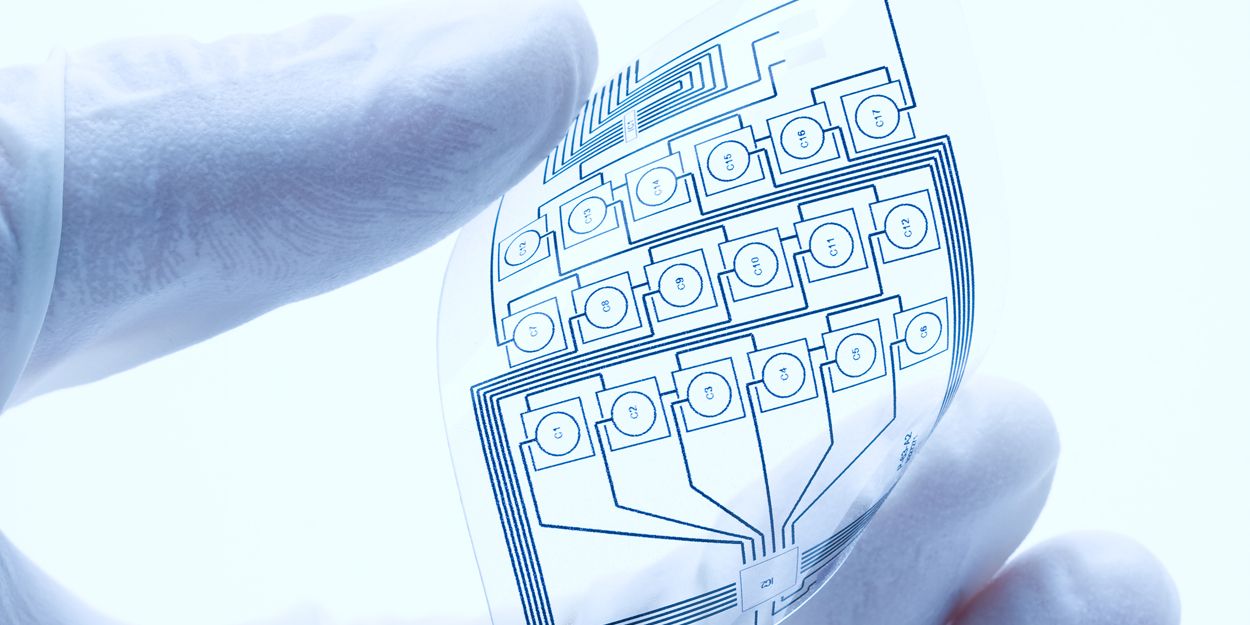In Mold Electronics (IME) technology, also known as “plastronics,” combines electronics with plastic to achieve high-performance products that integrate functionality and design.
It combines functional printing with electronic component hybridization, all using traditional transformation processes such as injection molding. This helps create lightweight devices with specific functions.
In recent years, efforts have been made to develop electrically conductive plastic materials and flexible printed electronics for integration into plastic parts.
Essentially, this work aims to create new products using conductive plastic materials and composite materials. These materials are based on conductive nanocarriers such as CNTs and carbon fiber, used for lightweight electromagnetic shielding.
IME also seeks to develop printed flexible electronics (capacitive sensors and sliders) integrated into plastic materials through In Mold Electronics. This achieves capacitive surfaces that enhance human-machine interaction (HMI), promoting mobility and transportation.
Processes in In Mold Electronics
This method begins with screen printing a PC or PE film with a decorative design. Subsequently, circuits, sensors, and conductive tracks are printed using materials such as silver, copper, and carbon, combined with conductive and dielectric pastes.
Once the cured plates are ready, the printed films are thermoformed into a 3D shape. These 3D shapes are placed in the injection mold, where resin is injected into the back of the shapes.
This results in a rigid plastic piece with an incorporated application. All elements on the surface of the piece, such as connectors and LED lights, are placed once the shaping and molding operations are completed, making the piece more functional.
Advantages of IME technology
Plastronics or In Mold Electronics offers significant advantages that add value to products. Here are some of the most important advantages provided by IME:
Lightweight pieces: Applying In Mold Electronics technology reduces the weight and dimensions of the final product. Additionally, post-processing operations are eliminated by directly incorporating electronic circuits into the injected piece during the molding process, resulting in flexible and lightweight products.
Cost reduction: This technique combines in-mold decoration technology with printed electronics, resulting in benefits such as reducing overall system costs, developing more flexible designs, and increasing manufacturing productivity. This optimization leads to time, material, and cost savings.
Advanced performance and functionality: In Mold technology eliminates buttons and various layers involved in assembling traditional electronic switches, replacing them with pre-integrated parts and capacitive surfaces. This achieves lighter, functional, and visually appealing pieces.
Beneficial to various industries: This technology can be used to manufacture instrument panels and interior decorative parts in automotive applications, ambient lighting and touch controls in appliance fronts. It is also used in healthcare applications, integrating electronics into various medical devices for patient monitoring.
In conclusion, IME is the technology of the new era, making it possible to incorporate functionality into complex, lightweight, and thin parts. It simplifies the integration of electronics into the final piece by using fewer materials and components. This technology is an excellent option for merging electronics with different devices used in transportation, healthcare, white goods, mobility, and other industries.
Walter Pack
specializes in incorporating IME into various types of critical parts in
various industry sectors, primarily automotive and home appliances. We provide
innovative technology that simplifies people’s lifestyles by integrating In
Mold Electronics into control panels, electronic boards, indicators, and more.




